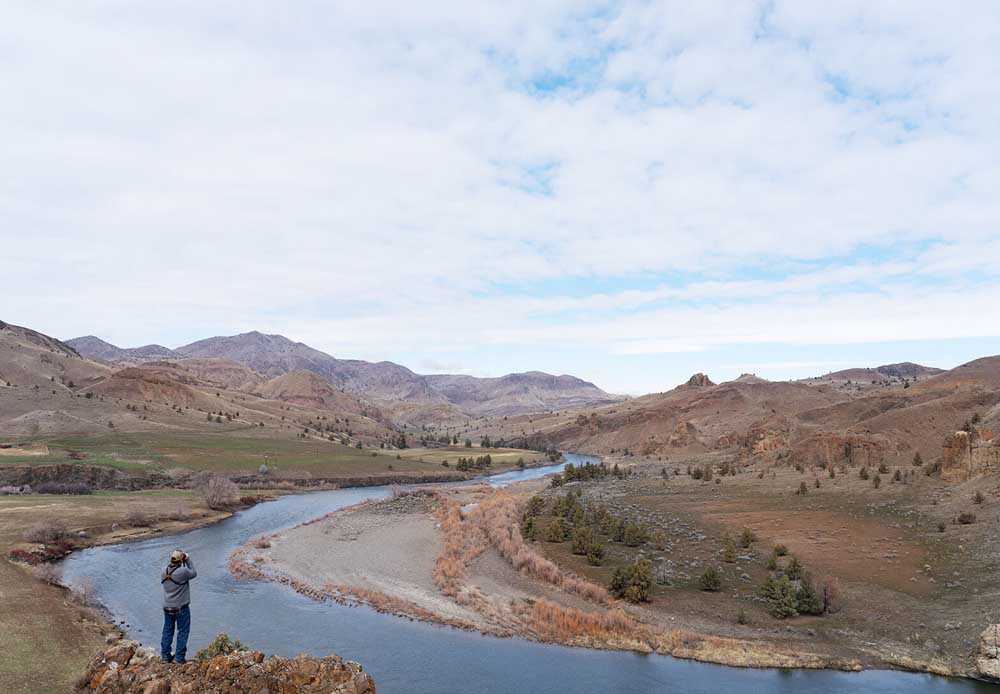Conservancy buys 30,000-acre ranch in Jefferson County
Published 5:00 pm Thursday, April 21, 2022

- The Wildlands Conservancy has partnered with the Center for Biological Diversity to purchase the 30,000-acre Enchanted Rocks Preserve in Jefferson County for conservation.
A California-based nonprofit has acquired the 30,000-acre Cherry Creek Ranch in eastern Jefferson County and plans to establish the organization’s first “climate preserve,” dedicated to mitigating the impacts of climate change.
The Wildlands Conservancy bought the former cattle ranch northwest of Mitchell for $16.5 million, or $550 per acre. Part of the funding was provided by the Center for Biological Diversity, which is also partnering on a revamped vision for the property.
All land management decisions at the newly christened Enchanted Rocks Preserve will be made in favor of creating a climate-resilient landscape, said Frazier Haney, the conservancy’s executive director. That includes halting the removal of juniper trees that sequester atmospheric carbon, and eliminating diversions previously used for flood irrigation along Cherry Creek to provide more water in-stream for fish and wildlife.
“We have moved off all the cattle, and are in the process of getting staff into the house there,” Haney said. “The change on the ground is just beginning.”
Enchanted Rocks is the 23rd preserve under the Wildlands Conservancy, and the first outside California. Combined, the group manages a little more than 200,000 acres for nature, outdoor recreation and education.
Haney said the conservancy was initially approached by a real estate agent in Bend about buying the 33,000-acre Skyline Forest on the eastern slope of the Three Sisters Wilderness.
When that proposal did not work out, Haney said they were steered to Cherry Creek Ranch near the John Day River where they were immediately struck by the area’s natural beauty, surrounded by rimrocks and multicolored geological formations.
“It was the most beautiful thing we’d seen in Oregon,” he said. “It was like a compass aligned in my brain. I knew it was for us.”
Over the next year, the Wildlands Conservancy will raise additional funds to build new visitor facilities at Enchanted Rocks and open the preserve to the public.
Haney said the conservancy brings in more than 1.5 million visitors each year to its nature preserves, and provides more free outdoor education programs for underserved communities than any other nonprofit in California.
As a climate preserve, Haney said the conservancy will protect 10,000 acres of forest at Enchanted Rocks from commercial logging. The group also opposes a federal program that calls for removing juniper trees to improve rangeland health and habitat for sage grouse.
”There are hundreds of nonprofits around the U.S. in this day and age that are trying to plant trees, because we know trees sequester atmospheric carbon as they grow,” Haney said. “Our mission and our vision at Cherry Creek is to stop the federal program that funds the wholesale removal of western junipers on thousands of acres at Cherry Creek, but (also) tens of millions of acres nationwide.”
The conservancy did not renew the ranch’s cattle grazing permit that expired March 31, and Haney said they will no longer divert from Cherry Creek — a tributary of the John Day River — to flood irrigate pasture for the livestock.
”That sort of restoration is called for in the Mid-Columbia River Conservation and Recovery Plan for all sorts of anadromous fish,” including redband trout and steelhead, Haney said.
Eventually, Haney said the conservancy would like to expand the boundary of Enchanted Rocks to connect with the Bureau of Land Management’s Sutton Mountain and Pat’s Cabin wilderness study areas to the east, and then to the boundary of the John Day Fossil Beds National Monument connecting 40,000 more acres of protected lands.
Peter Galvin, director of programs and co-founder of the Center for Biological Diversity, said the Wildlands Conservancy is well-positioned to rehabilitate large landscapes and make ecosystems more resilient to climate change.
”We hope conservation-minded landowners and donors join us in helping the conservancy promote a more species-protective management approach throughout the West,” Galvin said.






